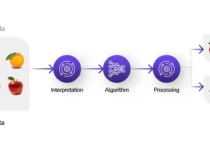How to Build a Personal Brand That Actually Works
Building a personal brand is not about building a business, it’s about building trust with your audience. It’s kind of like a business, because eventually, you’ll need to sell something, whether it’s your own product or someone else’s. But before any of that happens, you first need to convince people that you’re an expert, that you have the ability to provide real value.
So how do you do that?
You start by posting free content to educate others on what you know. At the same time, you need to convey your opinions in a way that grabs attention. There’s a lot to learn here, but if you keep showing up consistently, you’ll slowly build a large audience, people who may one day buy your product when you release it.
In this article, we’re going to break down all the important steps to build a personal brand from zero followers.
But before we dive in, you should know: this is a slow process. It can take months, sometimes even years, to build up a personal business. This isn’t something where you’ll see results in a few weeks or days. It’s not going to happen if you rush it.
That said, if your goal is to eventually quit your 9-to-5, work for yourself, choose when to work and when to rest, and have more freedom to enjoy your life, then this is the video for you.
Let’s start with the first question:
What should you post on social media?
Let’s say you don’t know much about anything yet. You’re not particularly skilled in any area. Then start with something you want to learn more about, something you’re obsessed with. When you choose a topic you’re genuinely curious about, creating videos or articles around it won’t feel painful. You won’t be doing it just for the money.
It’s also important that your topic has a big enough audience. One way to start is by watching videos that are already popular. Select the ones that interest you most, watch them closely, and dissect the structure and content. Then, create your own version.
Since you’re new to this and don’t yet know what kinds of videos can go viral, you should lean into what’s already working. Copy their style, their titles, their ideas, but put your own spin on it. The content is still original because it’s filtered through your unique perspective.
Choosing proven topics at least gives you a promising audience size. But if you try to come up with everything on your own, there’s no guarantee anyone will watch. In most cases, your videos won’t get many views at first, because as a beginner, you simply don’t know yet what grabs attention on social media.
So after choosing a video to imitate, observe its structure. Watch it again, not as a casual viewer, but as a researcher. Try to mimic how they organize their ideas and present them. Then, talk about the same ideas your way.
Now you might be thinking: even if I can copy the structure and topics, why would anyone watch my video when there are already amazing ones out there with millions of views?
That brings us to the second point: authenticity.
Even if the topic is the same, you can talk about it in an infinite number of ways. When you add your personal experience to the mix, nobody can replicate you. There are always people who want to hear a different story, especially one about how you overcame a challenge, or learned a lesson using your own method.
This is how you build authenticity, by sharing your views, your stories, your examples. People will want to hear from you, even if you don’t have a large following yet. And this is also how you start building trust with your audience.
To develop authenticity, you have to be brave. You need to express your own opinions, even if they might be controversial. You might worry that you’re wrong or that someone will argue with you in the comments. And yes, sometimes people will say mean things.
But if you get haters, you’ll also get supporters, because you were brave enough to stand for something. If you always stay in the safety zone and only say things that are “objectively correct,” nobody will want to listen to you.
The third point is building authority.
You might not have much authority in the beginning. You’re new, you haven’t worked in this field, and you’re not an expert yet. But the more you talk about it, the more people will start to see you as someone who knows their stuff, at least more than they do.
Even as a beginner, you can share your journey: how you’re learning, what methods you’re using, what you’ve discovered from videos and experts. Talk about that, and people who are a few steps behind you will want to follow along.
The more you speak about your topic, the more authority you’ll build. And eventually, you’ll reach a point where you can release an information product that people will actually want to buy from you.
Now let’s talk about how to monetize.
Your first product can be simple. Something you can build in a week. It doesn’t need to be expensive. You can test the waters by offering an eBook, a template, a coaching session, a paid newsletter, whatever fits your skills.
It shouldn’t be something overly complex or time-consuming to create. And yes, your first product will probably be bad. But that’s okay. What matters is that you build it early, so you can start improving it early. Once people start buying from you, you can adjust, refine, and eventually charge a higher price for a better version.


